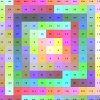Number Theory Seminar
The Langlands program, broadly speaking, aims to build a bridge between harmonic analysis on reductive groups and arithmetic. However, while the results of this program (like the various Langlands correspondences) are powerful and wide-reaching, to the uninitiated, it is often unclear how one can apply these general results to questions about objects you see in a first course in number theory. However, by adopting a certain perspective, such applications become clear and one can see them in abundance.
To illustrate this, we will explain one very concrete application to a problem from Galois theory: how large (in various senses) can the Galois group of an extension of the rational numbers be, if the extension is only allowed to ramify at a small set of primes? While the question is natural and the definitions are classical, we will see that to answer certain questions about the “largeness” of this Galois group, it seems necessary to use techniques involving automorphic forms and their representation-theoretic avatars.
This is meant to be a friendly, introductory talk, and in particular, no familiarity with the Langlands program (or even automorphic forms) will be assumed.
(This talk will be preceded or followed by an organizational meeting of the Number Theory Seminar.)
